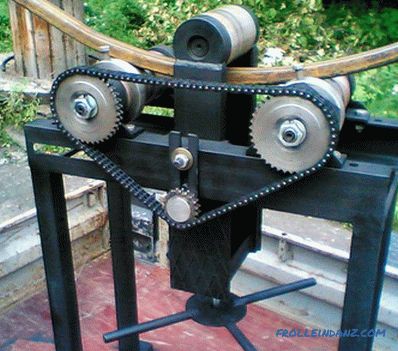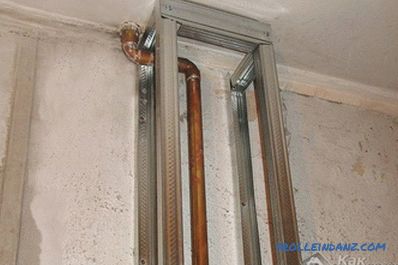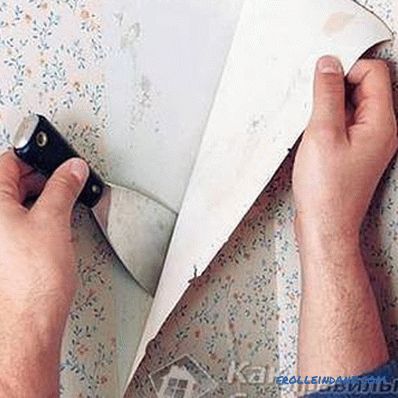The hood cleans the air in the kitchen from fumes, smoke and odors during cooking. Therefore, without a doubt, this appliance is an important element of the modern kitchen. When purchasing a headset, you should worry in advance about how to hide the pipe from the hood in the kitchen. Corrugation should not spoil the appearance of the kitchen and interior design. If you do not think in advance about how to disguise the corrugation, then during the installation process, certain difficulties may arise.
Variants of ventilation systems
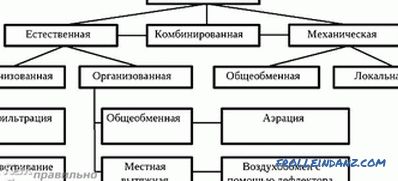
Today, there are only two types of kitchen hoods available on the market:
- circulation;
- flow.
Circulating hoods fit into any interior, because they are made in a wide variety. They differ in color, shape and size. However, such ventilation systems require complex maintenance, due to the regular need to replace filters. In flow hoods everything is much simpler. Here the air is vented to the ventilation shaft through the duct. In circulating exhaust systems, air is cleaned using filters.
Installation of flow hoods is complicated by the fact that they need to be connected through the air duct to the ventilation shaft. The trouble is that the hood and ventilation shaft are usually located on different walls. How to install the hood in the kitchen so as not to spoil the interior of this room?
Plasterboard box or suspended ceiling
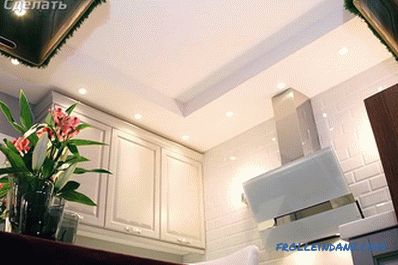
One of the options to close the duct is to sew it in drywall To do this, you need to crate to the size of the pipe. It can be made of metal box. Crate sheathed drywall. The finished box must be fixed to the ceiling / wall. It can be of any shape. This option is most successful if you plan to make a suspended plasterboard ceiling in the kitchen, called a two-level ceiling.
If you want the box to merge with the walls, sheathe it with the same material as the adjacent kitchen wall.
Another option is to hide the corrugation from the hood in the stretch ceiling. In this case, the pipe is located above the stretch ceiling and it is completely invisible. The best option at first glance. But what if there are problems in the duct? Please note that to reach it without disassembling the ceiling will be impossible. And this, let me say, extra financial and time costs. And besides, you will not be able to restore the ceiling by yourself. And this, in turn, means that we have to re-invite specialists to install stretch ceilings.
Installation of plastic pipes
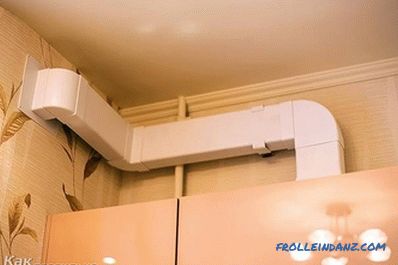
Another option is to use a plastic pipe instead of corrugations. They may be rectangular or rounded. The latter are more effective than the first. They have less air resistance. Nevertheless, rectangular pipes fit much better into the modern interior. Below are some of the advantages of plastic pipes:
- they do not clog up from dirt or grease, unlike their corrugated counterparts;
- they can be painted in any desired color and even glue on to the walls ;
- have high noise insulation.
When installing plastic pipes for exhaust, consider the quality of the ventilation system in the house. If it is not powerful enough, the cross-section of the pipe may not be enough for the duct to work properly.
In order for the ventilation system in the kitchen to work properly, the norms for the distance from the hood to the stove should be observed. For example, for an electric stove it is 70 cm, and for a gas stove it is 80 cm. This precaution is due to the fact that a layer of fat often accumulates on the surface of the hood, which quickly ignites when exposed to elevated temperatures.
So, if you decided to hide the unsightly pipes from the hood, then use one of the methods suggested in the article. If you have questions on the topic or you want to share personal experience with our readers, please write comments to the article.
Video
This video tells you how to hide the ventilation and exhaust pipes:
